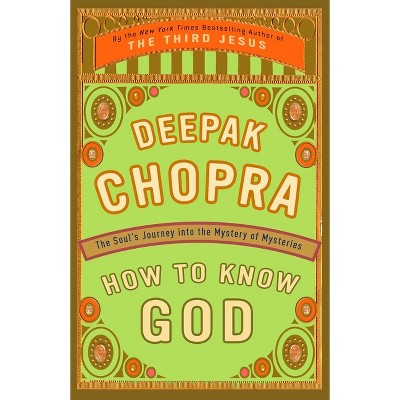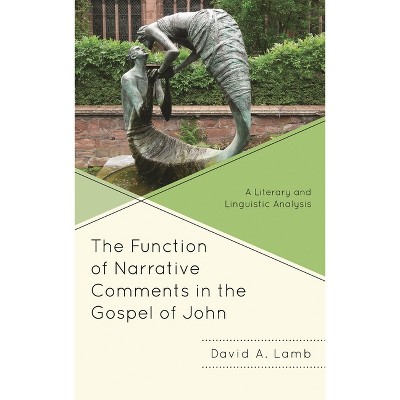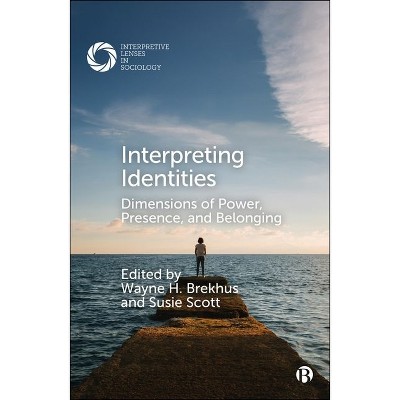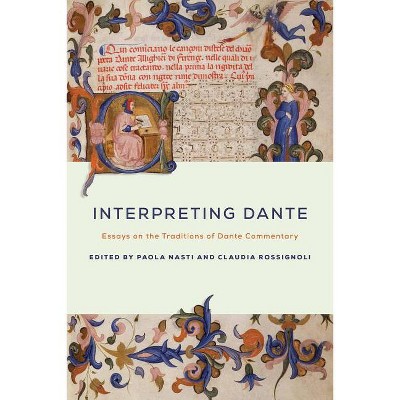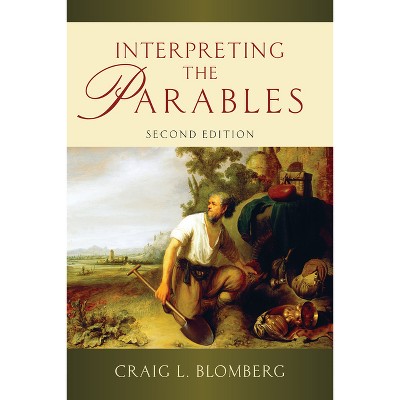Sponsored

Reading John through Johannine Lenses - (Interpreting Johannine Literature) by Stan Harstine (Paperback)
In Stock
Sponsored
About this item
Highlights
- In this book, Stan Harstine examines three passages in the Gospel of John in order to illustrate how diachronic and synchronic methodological approaches produce distinct results.
- About the Author: Stan Harstine is professor of religion at Friends University in Wichita, Kansas.
- 144 Pages
- Religion + Beliefs, Biblical Studies
- Series Name: Interpreting Johannine Literature
Description
About the Book
In this book, Stan Harstine examines three passages in the Gospel of John in order to illustrate how diachronic and synchronic methodological approaches produce distinct results. Using Leitwörter from the gospel's opening verses to shape an interpretive lens, Harstine identifies these passages as crucial transition points in the plot of the Gospel.
Book Synopsis
In this book, Stan Harstine examines three passages in the Gospel of John in order to illustrate how diachronic and synchronic methodological approaches produce distinct results. Using Leitwörter from the gospel's opening verses to shape an interpretive lens, Harstine identifies these passages as crucial transition points in the plot of the Gospel.
Review Quotes
Employing the metaphor of ldquo;lenses, rdquo; Stan Harstine demonstrates how choosing between a number of potential methodological filters can enhance our understanding of the Fourth Gospel and its presentation of Jesus. This book is both methodologically sophisticated and exegetically judicious. A true strength of Harstinersquo;s treatment is his attention to the Prologue and its importance for interpreting the rest of the Gospel narrative. This is exactly the sort of book I have been hoping to use with my own students!
Every reader of every text reads their text with some basic framework--and Bible scholars are no different, finding that certain highly structured frameworks can result in better readings and greater understanding of biblical texts. In Reading John through Johannine Lenses, Stan Harstine introduces students to four notable lenses that scholars use to read John#39;s Gospel. Of these four, Harstine finds that the best lens is actually the one embedded already in the Gospel: the prologue. He shows how each twist and turn of the narrative is best understood as a reminder to go back and look again through the lens of the prologue. Key themes in John, such as receive, believe, word, and life, draw down the horizons of John#39;s thought into one synonymous idea by the end of the story. This accessible book will prove tremendously rewarding to students who wish to reflect more deeply on how they read the Gospel of John, and how John#39;s story so successfully pulls them in!
Harstine affirms how essential it is for all interpreters to be not only aware of the lenses to which they are predisposed but also to make every effort to swap out their lenses from time to time to discover new depths and breadths of this magic pool of a text.
In this wonderful new book, Harstine provides a way through the maze of approaches to the Gospel of John by focusing on the hues the prologue brings to key passages. This book provides an excellent and accessible introduction to the history of interpretation of John while thoughtfully illustrating ways key themes from the prologue shape the narrative, rhetoric, and theology of John. Rather than ending the conversation, Harstinersquo;s analysis invites readers to continue looking back to the story of John, aware of the lenses they bring to the task.
In Reading John through Johannine Lenses, Stan Harstine argues for the application of multiple approaches to passages in the Fourth Gospel for a clearer understanding of the text. Using Johnrsquo;s Prologue as a methodological prism, Harstine demonstrates the effectiveness of reading the Gospel outside the limitations of a single lens. Tensions between diachronic and synchronic perspectives are eased as the combination of historical, narratological, rhetorical, thematic, and theological filters radiate a rich revelatory light that further unlocks for us the Gospelrsquo;s glorious message.
Stan Harstine has been taken with the intricate details of the Gospel of John for a long time now, which makes him a wonderful scholar and teacher of it. What makes the book unique is the combination of features Harstine has so skillfully woven together: a broad, up-to-date introduction to a variety of interpretive methods; attention to themes that span the Gospel (Life, Word, Receive, Believe); fleshing out methods and themes by focusing upon specific passages (Prologue, John 5, 12, and 17), and offering new insights through his own original exegesis (which additionally showcases the connection between the Prologue and the rest of the Gospel).Taking the oral context of the Gospelrsquo;s earliest audiences seriously, Harstine carefully and clearly guides us through a journey through this Gospel that reveals its literary and theological brilliance. All who are interested in John, novices and seasoned readers alike, will learn from this book. I will certainly use it in my own Gospel of John seminar.
This book will serve teachers and students well as it makes sense of the often-bewildering cacophony of methodologies and interpretations of John. Harstine establishes the prologue as the introductory prism for key themes and terms in the Gospel, then surveys historical, narratological, and rhetorical approaches to the prologue and chapters 5, 12, and 17, carrying the development of Johnrsquo;s major themes through these chapters. The payoff is a heightened appreciation for the complexity of the Gospel and the role of the approaches (lenses) one uses in reading it, yet what emerges is the unity of the Gospelrsquo;s authorial voice.
About the Author
Stan Harstine is professor of religion at Friends University in Wichita, Kansas.Shipping details
Return details
Frequently bought together

Trending Non-Fiction



